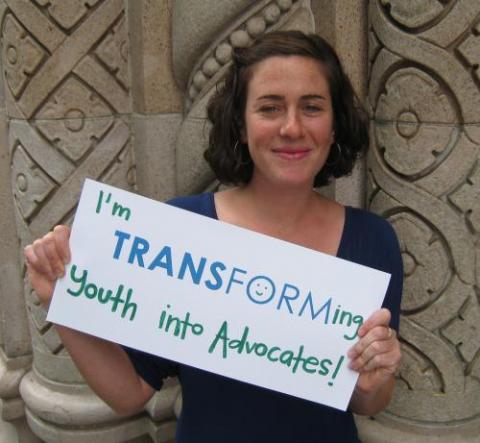
An interview with Alissa Kronovet, High School Program Manager for Alameda County Safe Routes to School.
How long have you worked in this field? What did you do previously?
I have been the High School Program Manager for Alameda County Safe Routes to School for almost five years. In 2003, I started teaching urban design and ecology in New York City public schools through the Brooklyn Center for Urban Environment, and soon became the Program Manager. In 2006, I moved to California to pursue a masters of urban planning, focused on youth and community engagement. At UC Berkeley, I worked with the Center for Cities & Schools Y-PLAN (Youth - Plan, Learn, Act, Now!), and cofounded a national network of youth engaged in urban planning called the Young Planners Network. After graduate school, I served as Associate Director for the California Center for Civic Participation, as technical assistant for youth engagement with the WK Kellogg Foundation’s Food & Fitness initiative.
What are some major issues facing your community?
I work in diverse cities throughout Alameda County. In Oakland, many students take the bus so improving service and scheduling with AC Transit is our obstacle. In East County, it’s shifting the predominant car culture and steering students towards an environmental framework. Many students live in areas that do not have supportive pedestrian or bicycle infrastructure, or they feel at-risk of being robbed, so another issue is walking and bike safety.
How have you overcome barriers to making an impact in your community?
Creating partnerships with city planners and having them explain policy change helps students understand the civic process, and exposes them to professional opportunities. At San Lorenzo High, AC Transit and Alameda County Public Works changed the bus schedule and co-designed infrastructure improvements using student input. We developed a countywide Youth Task Force, where two Safe Routes leaders from each of our eight schools meet monthly, to learn, plan, and evaluate their work.
What inspires you about your work?
It’s satisfying to serve as a bridge between diverse communities, governance structures, and planning agencies across the County. I navigate civic structures, identify resources and help disseminate information. This year, six of my schools are upgrading their bike parking facilities. I enjoy seeing the Safe Routes program become an integral part of high school culture, which can take several years. It’s also exciting when teachers respond well. During the Golden Sneaker contest, one teacher at Castro Valley High School ensured that every science class participated, which is over 1800 students!
What advice would you give to someone who is interested in supporting similar work?
We treat students like their opinion matters. They convince their peers to shift modes better than we can, and with our guidance they can carry out significant projects. It’s a two-way street. You need high expectations and high support to have effective outcomes. Also, most importantly, the program needs to be fun!
What resources have been particularly helpful to you?
The knowledge I gained from completing my master’s thesis. I researched past youth engagement models, planning theories, and practitioners. I would be happy to share the literature review!